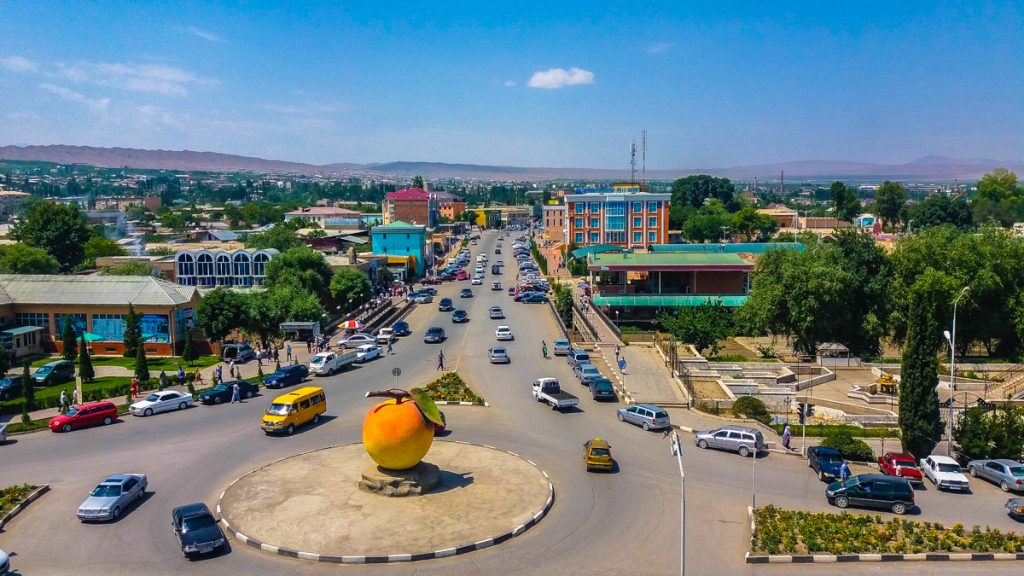Likely dating back even further than the 10th-century when it first appeared in the history books, Isfara, once known as Asbara, is one of Central Asia’s oldest towns. The modern city as it’s seen today was only built up from the 16th-century onwards when it was recognized as a major trading route and a significant stop along the Great Silk Road.
Located in Sughd in northern Tajikistan, Isfara is still an important trading route today – albeit on a much smaller scale than it once was. Set in the middle of the extremely fertile Ferghana Valley, a diverse range of trade industries abound in Isfara from construction to agriculture. But Isfara is particularly known for its legendary apricots – a fact that’s highlighted by the giant fiberglass Apricot Monument that stands proudly over a traffic circle in the center of town.
Surrounded by the Tajikistan border countries of Kyrgyzstan and Uzbekistan, Isfara is well connected. However, unlike many of the other northern Tajikistan towns, Isfara does not have many attractions that tell the tales of the city’s eminent past, except for a few museums, mosques and a giant Lenin bust.
In fact, as it is located near the Kyrgyzstan border, the main reason tourists travel to Isfara is in-transit, either on their way in or out of northern Tajikistan when the border is open. And Isfara makes a beautiful city to explore or pass through – especially if you take the scenic route along the Isfara River where you’ll cruise past lush apricot orchards, golden wheat fields and vibrant fuchsia hollyhocks.
Isfara’s ancient history is best discovered at the bricked Isfara Museum which features exhibits on the region’s natural history and includes a collection of old Soviet era artifacts. Other historic attractions to visit in Isfara include the Museum of Traditional Medicine and the golden statue of Vladimir Lenin – one of the most famous landmarks in Isfara – that towers over Rudaki in the center of town.
Uncover Isfara’s thousand-year-old culture by visiting one of the city’s religious attractions and witnessing its prominent Islamic traditions. Highlights include the 8th-century Hazrati Shoh Mausoleum, the Hoji Sayfiddin Mosque, the Khazrati Bobo Complex, also known as the Chorku Mausoleum, the Hodijon Mosque (the largest religious building in Isfara), and the 16th-century Abdullo Khan Mosque, partially destroyed in a flood, with its more modern 19th-century minaret.
Whether you are exploring Isfara properly for the day or just driving through, the Isfara Bazaar is a great place to stop and soak up the authentic culture of Tajikistan without the crowds. Taste some traditional Tajik soup and kebabs or stock up on a cooked rotisserie chicken, regional apricots, peaches and cherries for a roadside picnic. Alternatively, stop and refuel at one of Isfara’s typical local teahouses – the Oriyol and the Lola Teahouse.
The Isfara District, situated in Sughd Tajikistan, is home to several ancient settlements that are worthy additions to the bucket list. These include the 6th-century of Kourgali Tau, the 6th-century Teppa of Lakon, the 9th-century Kyrghyz, and the 10th-century antimony mines.










